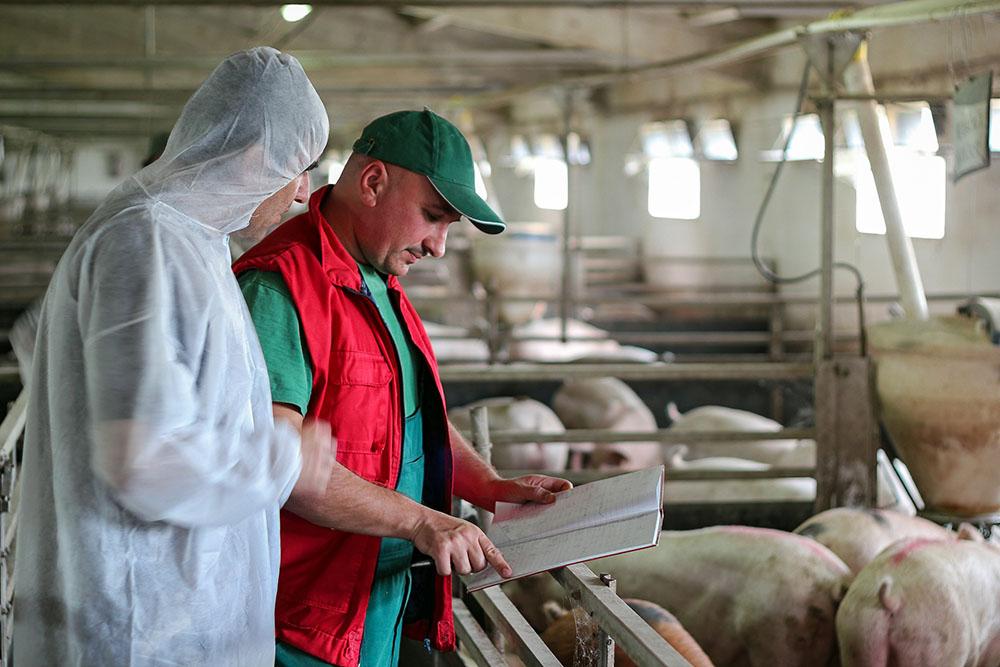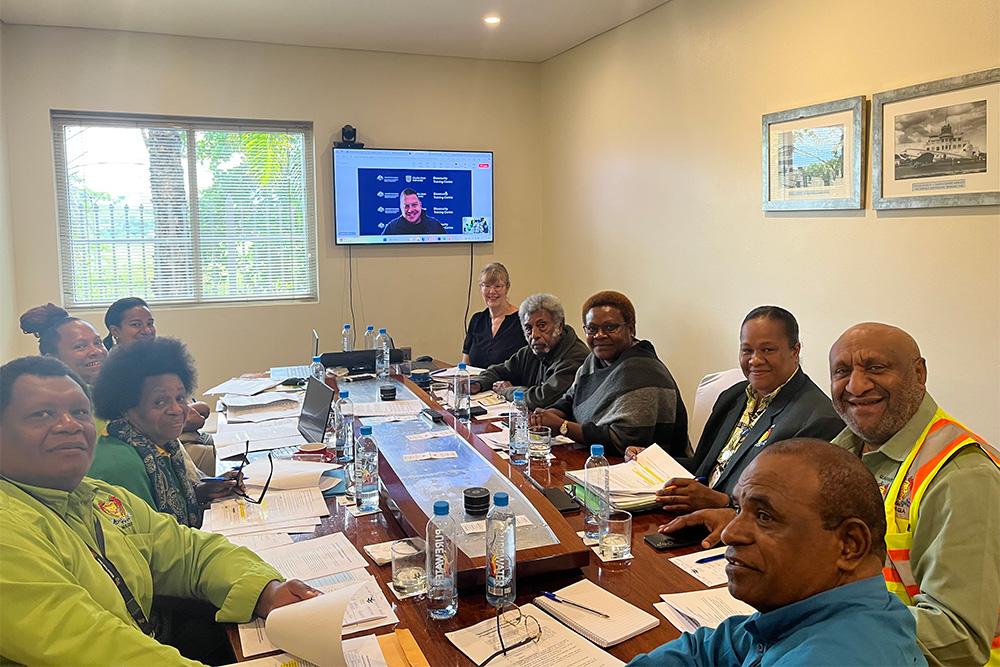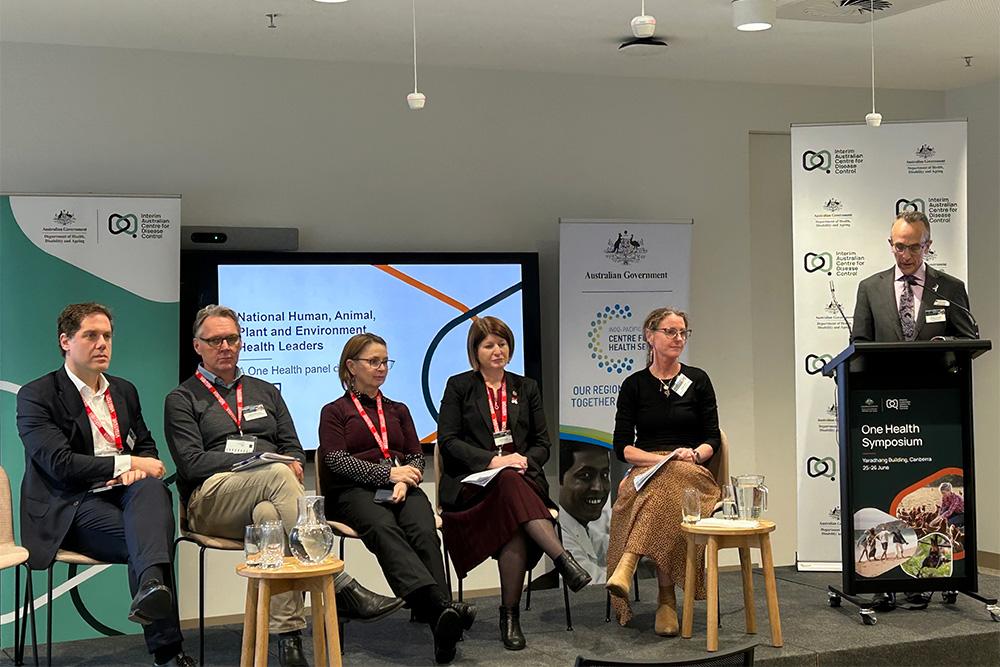The department is the largest public sector employer of veterinarians in Australia.
Saturday 29 April is World Veterinary Day and celebrates the work performed by veterinarians around the world. This year’s theme is promoting diversity, equity, and inclusiveness in the veterinary profession.
To celebrate the diversity of our veterinarians and the valuable work they do for the department, we’ve asked Andrea Preusche, Senior Veterinary Officer, Livestock and Zoo Animals and Prue McCormack, On-Plant Vet, Export Meat North about their roles, the work they do, and what World Veterinary Day means to them.
What is your role? What does your daily work look like?
Andrea Preusche: Currently I am a senior veterinary officer in the Livestock and Zoo animal team in the Animal Biosecurity Branch. I provide advice on, develop, manage, and implement biosecurity policy, programs and projects, including the technical market access negotiation for Australian livestock (cattle, sheep, goats) reproductive material (semen and embryos).
This requires a working understanding of animal pests and diseases affecting Australia’s animal health status and our biosecurity system. My day-to-day involves working with people (my team/the department/industry/international veterinary authorities and committees) to support the safe trade in ruminant germplasm.
Prue McCormack: As an on-plant veterinarian, my role is to enable certification of Australian meat and meat products for overseas markets. I oversee all aspects of animal welfare and perform ante-mortem inspection of livestock multiple times throughout the day. Other daily activities include monitoring food safety by verifying post-mortem inspection procedures and ensure company operations comply with relevant legislation.
What do you enjoy most about your work?
Andrea Preusche: There is so much I could put here but the 2 big ones would most definitely be the people and the variety. The teams I have worked with have all been very supportive and provided me with both the training and the support needed to really develop into the role.
In my 7 years working for the department, I have been involved in numerous interesting activities such hosting international government delegations to highlight Australia's unique biosecurity status and facilitate market access (trade); acted as the chair for an international standard setting body for the safe trade in embryos; travelled on a live cattle export vessel to Israel as a government independent observer to monitor animal welfare; redeveloped a germplasm industry body who inform government on policy and market access prioritisation; developed, designed and project managed a video highlighting and promoting Australia’s animal health and biosecurity systems to aid market access with overseas international veterinary government authorities; and hosted a department exhibitor stand at the 2022 Australian Veterinary Association Annual Conference to assist in promoting Australian Government veterinary careers.
Prue McCormack: I enjoy playing an integral role in animal welfare within the livestock industry. Although abattoirs are end of life for animals, it does not mean an animal’s welfare is not paramount. While women only make up 36% of the meat industry workforce globally, I find the industry fascinating and look forward to playing a vital role in its future.
Why did you choose the department?
Andrea Preusche: I was attracted to the variety of roles offered for veterinarians, that would allow me to be part of the team protecting, supporting, developing and maintaining Australia’s animals, environment, community and economy. Of course, an added bonus being it would provide a much-needed work life balance.
Prue McCormack: With a mixed practice clinical background in a rural area, I found that the department enables me to explore other avenues of veterinary science such as public health and biosecurity. It has also provided me and my family with a better work life balance.
What does World Veterinary Day mean to you?
Andrea Preusche: Australia is facing a recognised veterinary workforce shortage through high levels of attrition and serious impacts to the mental health and wellbeing of our veterinarians. The department is one of the largest employers of veterinarians in Australia and is also having difficulty in attracting and retaining qualified veterinarians, essential for both biosecurity and international trade. World Veterinary Day for me means supporting the individuals who dedicate themselves to this profession and connecting as a specialised group to implement lasting change – my small part in this is promoting alternative career pathways outside of clinical practice, more specifically in government vetting.
Prue McCormack: At times, being a vet can be a challenging job; but it can also be incredibly rewarding. To me, World Veterinary Day celebrates the network and community that veterinarians have in this wonderful industry.
Find out more about becoming an Australian Government veterinarian. Visit our Consider a career as an Australian Government Veterinarian webpage.



